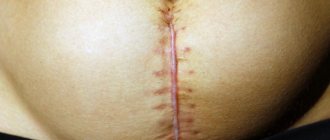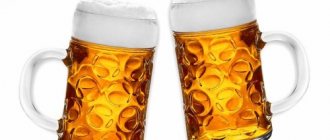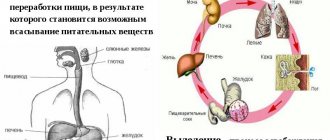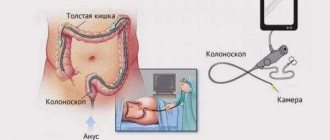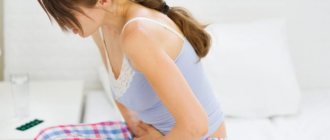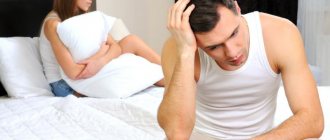As soon as the baby is born, the mother's uterus decreases in size, and the abdominal organs begin to get used to the new condition. Gynecologist Alexander Shlychkov talks about how to eat properly and what rules are best to follow in the first days after childbirth.
By the end of pregnancy, the intestines are in a compressed state. This significantly complicates the passage of food and may be one of the causes of constipation during pregnancy. Usually in the maternity hospital, women in labor are given cleansing enemas (to prevent involuntary emissions from the intestines during delivery). This is why women do not experience stool on the first or second days after childbirth. If a woman was not prepared in this way, she did not have any enemas, then her intestines begin to work immediately after childbirth as usual.
It is important! Water in large quantities is simply necessary in the first days after childbirth. It restores the water balance of the intestines and normalizes its functioning.
What is constipation after childbirth
Constipation is a condition of the body in which a person experiences difficulty with bowel movements or cannot cleanse the body for several days.
In the postpartum period, the appearance of constipation is associated with:
- with changes in hormonal levels;
- with stretching, weakening of the abdominal muscles;
- with uterine pressure.
After delivery, the uterus has increased in size, and accordingly, pressure on the intestines remains.
The uterus takes on a normal size after six to eight weeks, during which young mothers can observe:
- disturbances in defecation;
- displaced location of the intestines, which takes its normal position after some time;
- violation of peristalsis or intestinal motor function, which “pushes” food masses;
- fear of straining.
In many cases, childbirth is accompanied by perineal ruptures and takes place as a cesarean section. If too much pressure is applied, the sutures may come apart, so women should adhere to certain restrictions during healing.
Possible dangerous symptoms
Any type of pathological process adversely affects the body as a whole. This can lead to problems with lactation. Therefore, doctors advise paying attention to all unpleasant signs.
There are several pathological symptoms in the form of:
- increased abdominal pain;
- discomfort with increased temperature values;
- purulent vaginal discharge;
- internal bleeding.
You should not hesitate to call a doctor, as this can be fatal.
Causes of problems with bowel movements
To effectively eliminate constipation that occurs during the postpartum period, it is first necessary to establish its nature.
Experts identify two groups of reasons that can contribute to problems in this area: physiological and psychological.
Physiological reasons
Pregnancy and childbirth are serious processes that involve the occurrence of many changes in the female body:
- stretching of the muscles of the perineum, peritoneum,
- intestinal displacement,
- disturbance of hormonal balance, peristalsis.
All this can cause constipation.
If the muscles are in a weakened state, atonic constipation often occurs.
A woman may feel discomfort, pain, nausea, and apathy. In this case, mucus and blood discharge may be present in the stool.
Psychological reasons
The reasons for this nature are hidden in the fear of seams coming apart.
Gynecologists advise women who have received stitches after childbirth to observe certain restrictions.
It is especially recommended that you avoid physical activity during the first couple of months after childbirth.
Also, you should not push until complete healing. In addition to this, the situation may be complicated by new worries, thoughts, and worries.
Psychological reasons lead to spastic type constipation.
In this case, the stool looks like spherical lumps. Symptoms include lack of appetite, abdominal cramps, and nausea.
When to see a doctor
The duration of the period of pain depends on individual characteristics and the speed of uterine involution. In most cases, during the first two weeks, the physiological discomfort associated with feeding the baby gradually decreases. The pain no longer appears at every feeding; its intensity decreases. When the uterus contracts completely, this symptom will disappear.
But there are signs that indicate a possible pathological process. If they appear, do not delay your visit to the doctor:
- temperature may be low at first and then rise to 39°C;
- disturbance of general well-being - weakness that does not go away after rest;
- nagging pain in the lower abdomen that is constantly present;
- chills as a symptom of fever;
- headache;
- bloody discharge from the genital tract (it may intensify and change in character from mucous to more liquid, reminiscent of scarlet blood);
- cramping pain resembling spasms, after which blood clots are released;
- absence of stool for more than two days;
- inability to lift your heels off the bed when lying down;
- change in gait to a waddling, “duck” gait;
- sudden onset of bleeding over a long period after discharge from the hospital.
With a placental polyp, bleeding is usually intense and begins a month or two after the birth of the child. At the same time, it can be differentiated from menstruation: during menstruation, the nature of bleeding changes daily, it becomes less intense. In the case of a placental polyp, the discharge is scarlet and only intensifies.
You can contact a gynecologist for any changes that a woman considers different from physiological.
What to do to get rid of afterbirth constipation
Effective treatment of constipation is possible only under the supervision of a therapist who can determine the cause of the problem and prescribe proper treatment.
In many situations, medications are not prescribed. It is possible to regulate the functioning of the intestines with proper nutrition, normalization of the regime, and stabilization of the psychological state.
Medicines are prescribed to relieve constipation in extreme cases when conventional treatments have failed.
It should be remembered that it is recommended to take medications after consultation with a therapist. Even gentle herbal or homeopathic medicines may not be safe. For example, herbal medicine can cause allergies in a newborn, so any treatment that involves taking medications or herbal remedies should be carried out under the supervision of a doctor.
The main method of normalizing bowel movements should be proper nutrition and physical activity.
If the cause of constipation is weak muscles, you need to try to strengthen them. To do this, you can perform exercises to train the abdominal muscles and perineal muscles.
Psychological problems can also be eliminated if you learn to relax even in the face of an increased number of responsibilities and the emergence of responsibility for the baby.
You need to pay more attention to walks and relaxation; some of the responsibilities can be assigned to your spouse or close relatives. This will help quickly restore your psychological state, and therefore get rid of constipation.
Treatment
It will vary depending on what is causing your stomach pain. If it's just spasms, then a massage is prescribed. It is advised to drink as much water as possible. Does not help? Then an antispasmodic is prescribed.
Everything is done under the supervision of doctors.
It is necessary to formulate a diet. If you do everything correctly, you can achieve results in 1-2 weeks. But you shouldn't rejoice so quickly. Constant prevention is also required so that the stomach does not start to hurt again. This includes regular walks in the fresh air and physical exercise.
After childbirth, the body requires a long and difficult recovery. Therefore, in the postpartum stage, a woman is often bothered by painful sensations in the stomach area. The main causes of this condition are considered to be pathologies of the digestive tract, diseases of nearby organs and hormonal imbalance. You can easily get rid of unpleasant symptoms if you consult a doctor in a timely manner and undergo treatment.
Postpartum nutrition to normalize intestinal activity
Incorrect nutrition plays an important role in the formation of problems with bowel movements after childbirth. All diets should be postponed, even if you really want to quickly return to your previous figure. Also, you should not overeat, get carried away with undesirable foods - baked goods, sweets, fatty, spicy.
The weight will return to normal on its own, but if a woman does not follow the restrictions or, on the contrary, begins to starve, the problem may worsen.
Safe and undesirable foods to normalize digestion
| Safe foods to normalize digestion: | It is advisable to exclude from the diet: |
| muesli, | currants |
| zucchini, | strong tea, |
| pumpkin, | coffee, |
| carrot, | crackers, |
| porridge, | legumes, |
| spinach, etc. | nuts, |
| hard cheeses, | |
| strawberries, | |
| semolina porridge, | |
| White bread, | |
| baked goods. |
Regarding a suitable diet, you can consult with your doctor, who will recommend the optimal menu taking into account the cause of constipation.
The main thing is to avoid heavy, difficult to digest foods, which, with impaired peristalsis and weakened muscles, will be difficult to move through the intestines.
In addition, fermented milk products, especially those containing bifidobacteria, will help quickly normalize stool, and drinking plenty of water in the form of dried fruit compotes, cherries, and plain water will also help.
Diagnostics
Gastroendoscopy will help clarify the situation with the developing disease.
After childbirth, a woman’s body is weakened and can be affected by any disease. For an accurate diagnosis, the doctor conducts the following studies:
- Anamnesis collection. It is necessary to identify the patient’s diet and sleep patterns, chronic and genetic diseases in the family.
- Blood test, gastric juice (if necessary).
- X-ray.
- Ultrasonography.
- Gastroendoscopy.
Daily regime
After the birth of the baby, a woman is burdened with a lot of responsibilities, which often becomes the cause of overwork and breakdowns.
To eliminate constipation, young mothers are advised to avoid negative emotional and physical stress.
During this period, it is better to rest more and learn to establish a new regime that allows you to regain strength.
In addition to getting enough sleep, light physical activity will also be useful. For example, you can sign up for aerobics, Pilates, yoga. If it is not possible to leave the child with relatives, then the exercises can be done at home by purchasing a disk or finding exercise lessons on the Internet.
C-section
A caesarean section has a worse effect on the functioning of the intestines than a natural birth, since during the operation the woman is given a certain drug that “inhibits” the functioning of the intestines. This causes atonic constipation . For atonic constipation, a certain drug is used that stimulates intestinal function.
As a consequence and extreme degree of atonic constipation, a woman may experience bloating and bloating. This happens if the uterus ruptures during childbirth, or if the woman in labor had peritonitis.
Sometimes complications caused by a long stay under anesthesia contribute to the occurrence of atonic constipation. But now Russian clinics are pursuing a policy aimed at ensuring that young mothers immediately begin to move actively after giving birth: this affects the functioning of the intestines - it begins to function much better. So, 6-8 hours after a cesarean section, the woman is asked to get up and walk around - more and more every day.
Advertising
SELECTING ALTERNATIVE EXERCISES
The best option, of course, would be to limit risky exercises to a minimum and find effective and safe alternatives.
For example, when the pelvic organs are prolapsed, it is highly undesirable to perform deep squats with weights (in my opinion, even using special belts). This greatly increases and shifts the pressure towards the pelvic diaphragm, and even by tightening the perineum, we cannot prevent the organs from moving downwards. The pelvic floor muscles only hold back the process. The natural question is, why this burden if there are healthy alternatives? The buttocks can be pumped up with other, no less effective exercises. For example, this is a weighted gluteal bridge or a light version - strengthening the muscles of the buttocks in a position on all fours.
Diseases of internal organs
Abdominal pain can be a signal of a developing disease of the internal organs, and not only the organs of the gastrointestinal tract may be involved. The most common problems after childbirth include the development of gastritis and even ulcers - this is a consequence of the “wear and tear” of the stomach, which is typical for a woman during pregnancy. It is strictly forbidden to treat the presented diseases on your own - the types of pathologies should be determined, on the basis of which the gastroenterologist will prescribe the appropriate treatment.
Abdominal pain can also indicate disturbances in the functioning of the pancreas or intestines - these can be exacerbations of an existing but not previously identified disease, as well as acquired pathology. The most common and unrecognized include pathologies of the kidneys, liver, appendages, uterus and even lungs. These diseases are often confused with stomach pain.
How to treat
Having determined the cause of stomach pain, only the attending physician can advise what to take to eliminate it. If the cause of the pain syndrome is the development of a disease, the doctor will prescribe the necessary treatment and tell you what to do if your stomach hurts during breastfeeding. It is allowed to practice treatment of diseases only after the exact cause has been identified - if a woman begins to be bothered by burning pain in the stomach, it is necessary to immediately call an ambulance, since it is likely that internal bleeding has begun.
Practical advice: If you have a spasm in the abdomen, you can use a massage - even before the examination, you are allowed to massage the abdomen clockwise during unexpected discomfort. If the massage turns out to be ineffective, you are allowed to take an antispasmodic - when breastfeeding, No-shpa and Spazmalgon are allowed. It is prohibited to take other medications without examination.
Often the cause of stomach pain is poor nutrition - not all mothers adhere to the dietary habits when breastfeeding. This cannot be allowed, because the body and internal organs are weakened, so the development of diseases will not be long in coming. It is better to use proper nutrition tips to avoid problems. It is also important to provide frequent meals in small quantities - the stomach should not be full. The cause of pain can also be a lack of fluid when the stomach begins to extract water from the gastric juice, and this is accompanied by discomfort. Proper nutrition during breastfeeding is the prevention of abdominal pain, digestive problems in the child and maintaining slimness and lightness.
